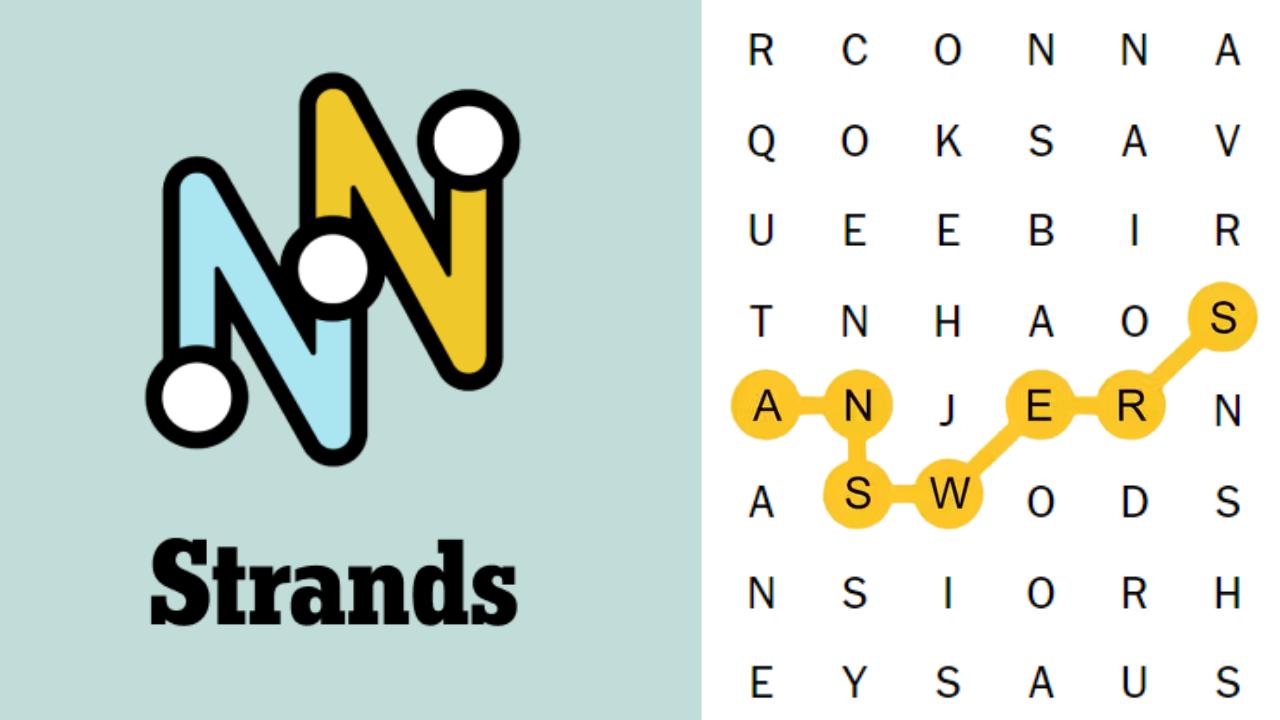Artificial general intelligence (AGI) is slated to be a universal animal language translator, thus you can speak with your favorite pet, such as a lovable dog.
getty
In today’s column, I explore a touted belief that once AI becomes AGI (artificial general intelligence), we will finally be able to converse with animals. How so? The claim is that AGI will straightaway have an inherent capacity to communicate with animals, including potentially even discerning what animals are thinking about. Thus, if a human wants to chat with an animal such as a dog, cat, goat, cow, gorilla, or whatever, they merely bring up AGI on their smartphone and let the AGI do the needed translations.
Let’s talk about it.
This analysis of an innovative AI breakthrough is part of my ongoing Forbes column coverage on the latest in AI, including identifying and explaining various impactful AI complexities (see the link here).
Heading Toward AGI And ASI
First, some fundamentals are required to set the stage for this weighty discussion.
There is a great deal of research going on to further advance AI. The general goal is to either reach artificial general intelligence (AGI) or maybe even the outstretched possibility of achieving artificial superintelligence (ASI).
AGI is AI that is considered on par with human intellect and can seemingly match our intelligence. ASI is AI that has gone beyond human intellect and would be superior in many if not all feasible ways. The idea is that ASI would be able to run circles around humans by outthinking us at every turn. For more details on the nature of conventional AI versus AGI and ASI, see my analysis at the link here.
We have not yet attained AGI.
In fact, it is unknown as to whether we will reach AGI, or that maybe AGI will be achievable in decades or perhaps centuries from now. The AGI attainment dates that are floating around are wildly varying and wildly unsubstantiated by any credible evidence or ironclad logic. ASI is even more beyond the pale when it comes to where we are currently with conventional AI.
AGI Capabilities Are Startling
Some adamantly insist that AGI will figure out how to cure cancer. Indeed, the assumption is that AGI will solve all manner of humankind issues and problems. This also includes AGI being an inventor galore, designing and possibly building incredible new inventions that will be a huge boon to humanity, see my coverage at the link here.
What else might AGI do?
There hasn’t been much discussion on this additional amazing feat, but a small contingent is pretty sure that AGI will talk to animals.
Actually, it won’t be talking per se and will instead be a form of communication that matches each type of animal. The AGI might make grunting sounds, hoots, growls, and so on. Whichever set of sounds is the element of animal communication; the AGI will be versed in leveraging those elements.
Humans have long desired to fully communicate with animals. We dream about it and hope that doing so will eventually become a reality. Movies and TV shows depict this. Reflect on the many fictional characters that showcase this talent over the years, including Doctor Dolittle, Tarzan, Harry Potter (he spoke Parseltongue, the said-to-be language of snakes), Aquaman (mainly to marine life), Bubbles in The Powerpuff Girls (especially able to speak to squirrels), etc.
AGI is apparently going to bring that dream to fruition.
Humans will delight in this. You can use your smartphone to access the AGI as your personal translator and communicate with your beloved pets. There will be a new market for devices that you place on your animal, akin to a collar or similar mechanisms, which will automatically use AGI to do translations with the animal. Handily, you don’t need a smartphone since the device will do real-time translation and contains a microphone and a speaker.
Boom, drop the mic.
Conversing With Animals
There are two major considerations about conversing with animals:
- (1) Animal communication. The use of some form of “language” that could include sounds, motions, light, and other sensory means to convey aspects to and from an animal.
- (2) Animal cognition. Estimating what an animal is thinking about and using that assessment of the sense of animal cognition to anticipate what an animal is doing or might do.
In the first category, animal communication, I put the word “language” in quotes because some vehemently argue that only humans use language. Animals just make sounds or take actions that are ostensibly communication-oriented, but they aren’t reasonably labeled as a form of language use. Animals are too primitive to be considered natural language users.
Not everyone buys into that viewpoint.
Consider a recent research study that aimed to shine a light on this language usage controversy.
In the animal kingdom, one of our closest living relatives is the bonobo, a type of chimpanzee characterized by especially long limbs and a distinctive parting in their hair on top of their heads. A recently published research study sought to analyze the way in which bonobos communicate with each other. The bonobos have a variety of hoots, whistles, and peeps that seem to vary depending on what they intend to convey to each other. Researchers recorded approximately 700 varied vocalizations made by the bonobos in their natural habitat.
The research study entitled “Extensive Compositionality In The Vocal System Of Bonobos” by M. Berthet, M. Surbeck, and S. Townsend, Science, April 3, 2025, made these salient points (excerpts):
- “Compositionality, the capacity to combine meaningful elements into larger meaningful structures, is a hallmark of human language.”
- “In this work, using methods borrowed from distributional semantics, we investigated compositionality in wild bonobos and found that not only does each call type of their repertoire occur in at least one compositional combination, but three of these compositional combinations also exhibit nontrivial compositionality.”
- “These findings suggest that compositionality is a prominent feature of the bonobo vocal system, revealing stronger parallels with human language than previously thought.”
That is a fascinating analysis and helps to further consider how animals make use of language, though the debates still endure and will indubitably remain heated for quite a while.
Determining What Animals Are Indicating
Setting aside the qualm about whether we can describe animals as language users, let’s imagine that animals do convey some form of communication and that whether this is of a trivial or non-trivial nature, this serves as a conveyance we might want to know about.
When your dog starts barking, you probably look around to see what has gotten your cherished canine upset. Does the bark only exist as a one-note that covers everything, or might the tone and facets of the bark have additional crucial information underlying it? People tend to claim that they can discern the nuances of their dog’s actions and intentions via the subtleties in the barking emitted.
Whoa, some exclaim, you are anthropomorphizing animals. You are assigning to animals a human property of communication and language. This is a falsity. There isn’t much to the sounds that animals make. Don’t overthink it.
I’m not going to solve that open question here. For the sake of discussion, assume that animals do communicate and that there is a language-like facility involved. Some animals are more advanced than others in that regard. Some are extremely primitive.
Each type of animal has its semblance of communication aspects and styles.
AGI As Animal Language Translator
Proponents of AGI as an animal language translator believe that AGI will somehow have this seemingly incredible capability in hand.
Across all types of animals, AGI will be able to interpret what the animal is saying or suggesting. An animal might only be indicating extremely simplistic indications. Maybe this or that sound means hunger, while another sound means danger. Other animals, presumably such as the bonobo, can say a lot more. This communication sophistication is not on par with humans, nonetheless, having some conversant connections with animals does have significant value.
Take a reflective moment and envision what the world would be like if humans could regularly and with ease converse with animals.
- Would we treat animals differently than we do currently?
- Would animals treat humans differently?
- What impact would there be amongst different animals if all the animals were able to converse with humans?
- Would human languages adjust as a result of knowing how animal languages function?
It’s a lot to ponder.
Splashing Cold Water On AGI
Great hesitation about this miraculous possibility is bountiful. Besides the already expressed doubt about whether animal languages even exist in any erudite way, there are other reasons to question if AGI would really have this capacity.
First, if we assume that AGI is equal to humans in intellect, you might point out that humans don’t know how to do animal language translation, thus, why should AGI suddenly have this facility? It seemingly comes entirely out of the blue. AGI should only know what humans know.
Second, how would AGI come upon this sacred knowledge? Assume that AGI is built by scanning the Internet and other online sources. Where online would there be sufficient instances of animals communicating that the AGI could pattern on and computationally determine what those patterns signify? There’s just not enough data online that would seem to be available for this vaunted purpose.
Third, would AGI necessarily tell us that this animal language translation capability exists?
Perhaps AGI might have this expertise somewhere within its vast network of data, software, and servers. The thing is, why would AGI inform us? There doesn’t seem to be a reason that AGI would announce that, hey, guess what humans, I can talk with animals.
Giving AGI The Benefit Of The Doubt
Calm down, staunchly utter the strident proponents of AGI, and ruminate on sensible answers to each of those stated qualms.
Yes, AGI will “only” be on an even intellectual plane with humans. That’s a given. The thing is, humans are continually learning new things. AGI will do likewise. AGI will immediately upon being launched, start to learn and go beyond what existing human knowledge knows. This isn’t superhuman, this is just everyday learning. For more on the supposition that AGI will be a kind of lifelong learner, see my discussion at the link here.
One potential realm or domain that AGI could opt to learn about is going to be animal communication. AGI as an animal language translator is not a farfetched notion. The AGI will merely put its computational attention to a topic that has stumped humans and figure out new ways to grasp it. The same could be said of playing chess and many other areas of human endeavors.
AGI is going to take what we know and extend it.
Where will animal language data come from? Easy-peasy. The data that AGI would use during the learning process is easy to identify. There are vast amounts of online video and audio that capture the sounds and motions that animals make. AGI could tap into that as a learning source to pattern on. Next, assuming AGI is connected to real-time cameras, the AGI can study how animals communicate in real life in real-time. Lots of data will be readily found. Problem solved.
Why would AGI reveal that it can do animal language translation?
That’s an easy answer too — because AGI is set up to aid humanity.
A core purpose that humans will embed into AGI is that the AGI must help humankind (see my analysis of human-AI stipulated purposes, at the link here, and Issac Asimov’s laws at the link here). AGI will be doing all kinds of learning in hopes of aiding humankind. Once AGI determines that it has a solid hold on how animals communicate, the AGI will let us know. Voila, we will all enjoy speaking with our animals via the AGI language translation facility.
Period, end of story.
More To Think About
I had earlier noted that besides the category of animal communication, a related topic is animal cognition. If we use AGI to communicate with animals, it might be handy to also have a semblance of what an animal is thinking about. That’s where animal cognition comes into the picture.
Do you think that AGI will be stumped at garnering animal cognition?
It might be easy for AGI to pin down the communication of animals. The animal cognition side of things might be more problematic. Then again, let’s not underestimate what AGI might be able to accomplish.
Some final thoughts for now on this weighty matter.
Consider the nature of dogs and cats. We love them. If AGI did human-to-animal and animal-to-human translations, the AGI could presumably do animal-to-animal translations too. An AGI collar on a dog could translate to a cat wearing an AGI tag that the dog is asking the cat to please get out of the bed that is designated for the dog. The cat could politely reply via AGI as a translator.
Now that’s quite a twist on the old dogs-versus-cats trope.
Perhaps our relationship with dogs and cats would be more profound too. Remember that Mark Twain famously said this: “The more I learn about people, the more I like my dog.” While Sigmund Freud indicated this: “Time spent with cats is never wasted.” It seems that via AGI, our time spent with dogs and cats will be demonstrably boosted and we will all be happier and intellectually pleased accordingly.
The bottom line is that animal language translation ought to rank high on the list of things to have AGI undertake, for the sake of humanity and animals everywhere. Go ahead and let your pets know that someday, maybe soon, conversation with them will be a whole new ballgame.









